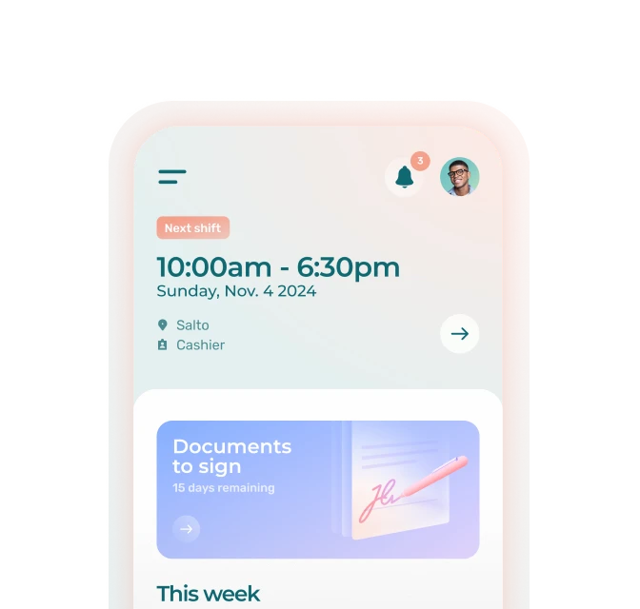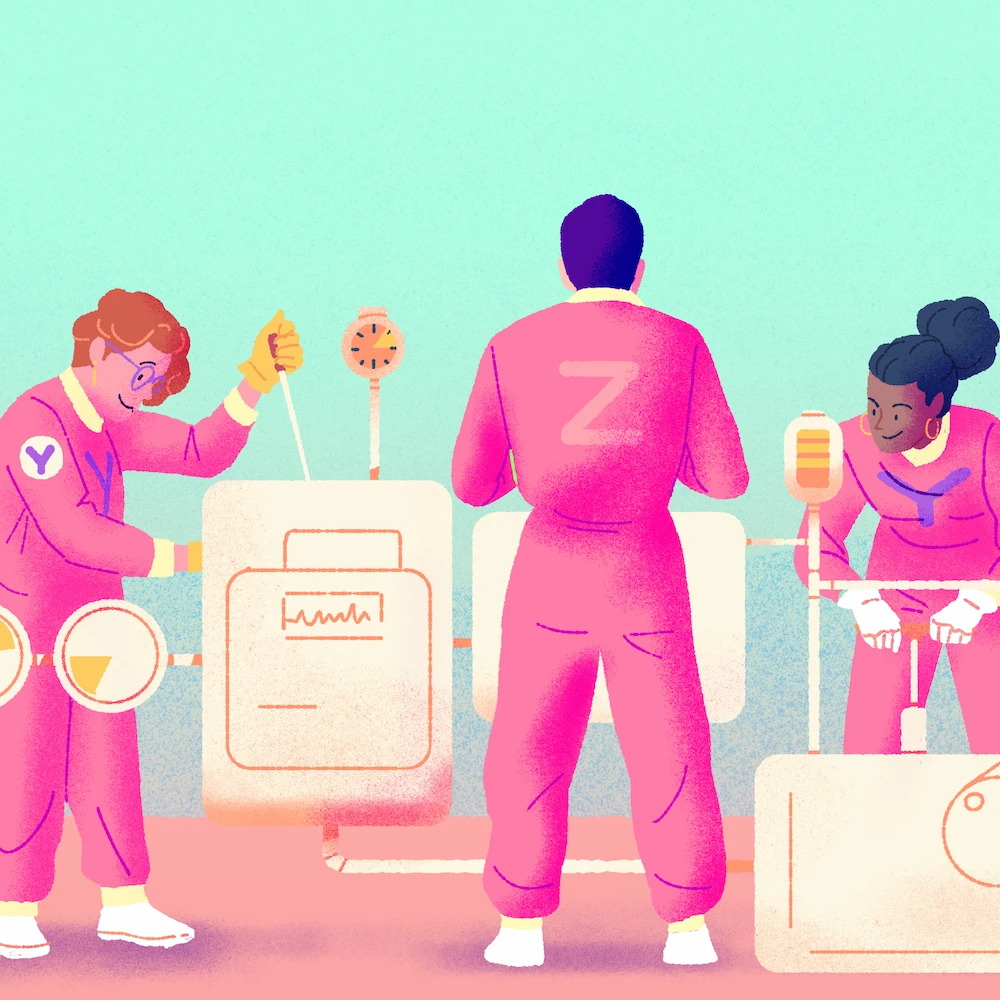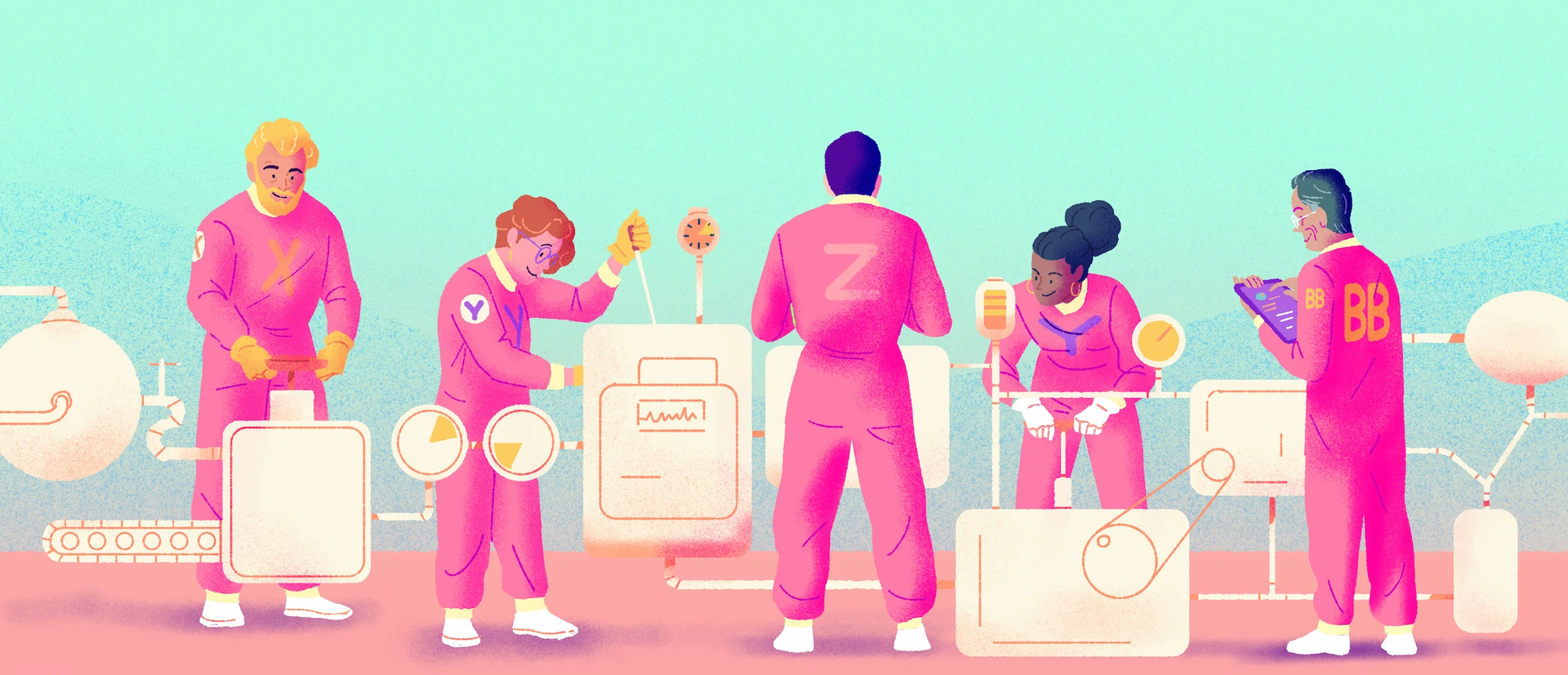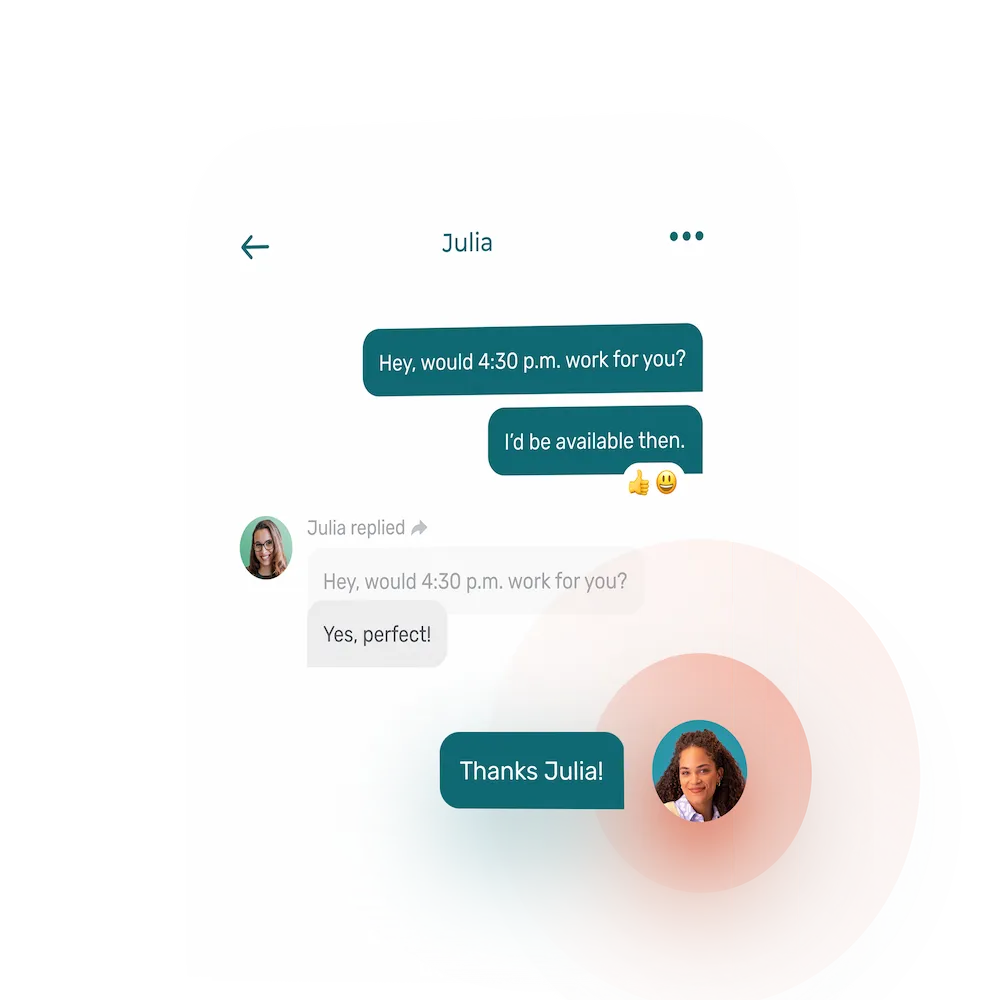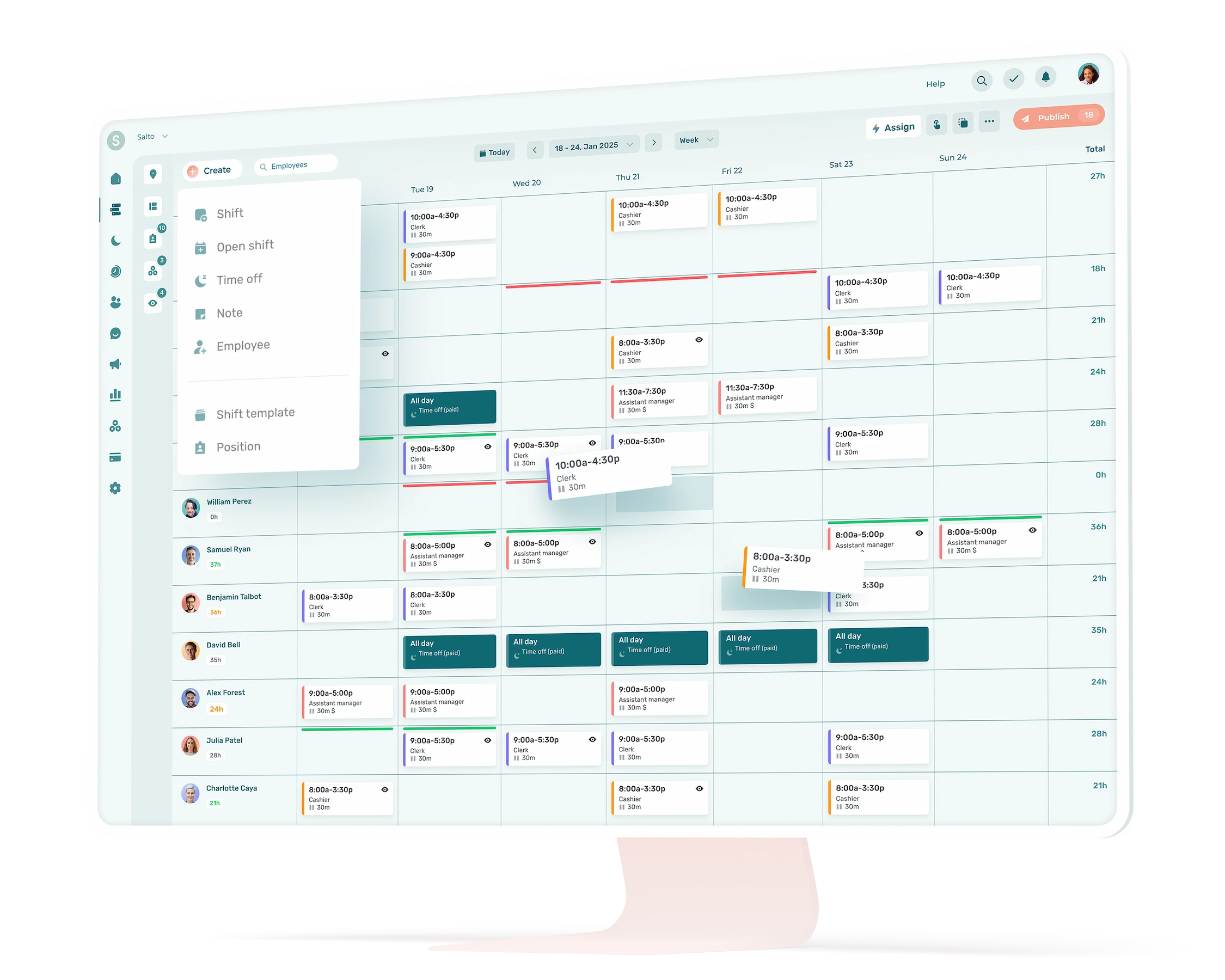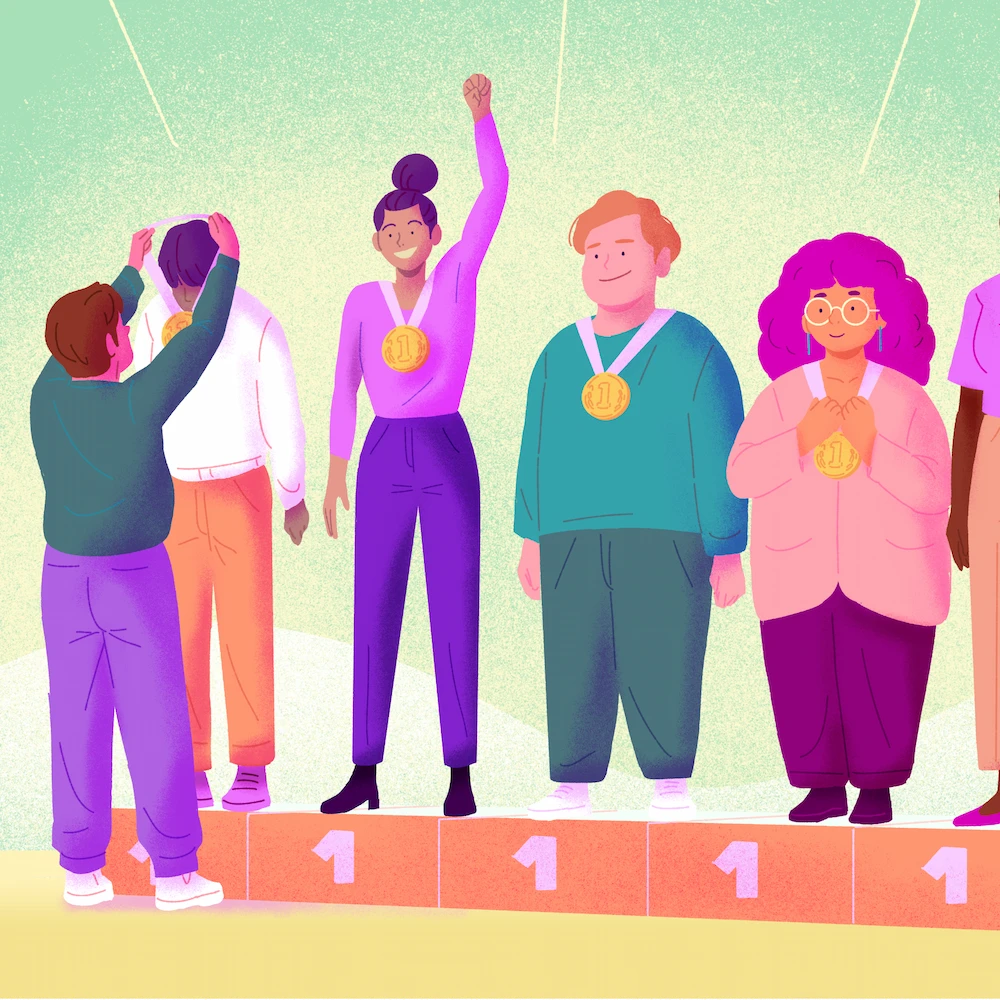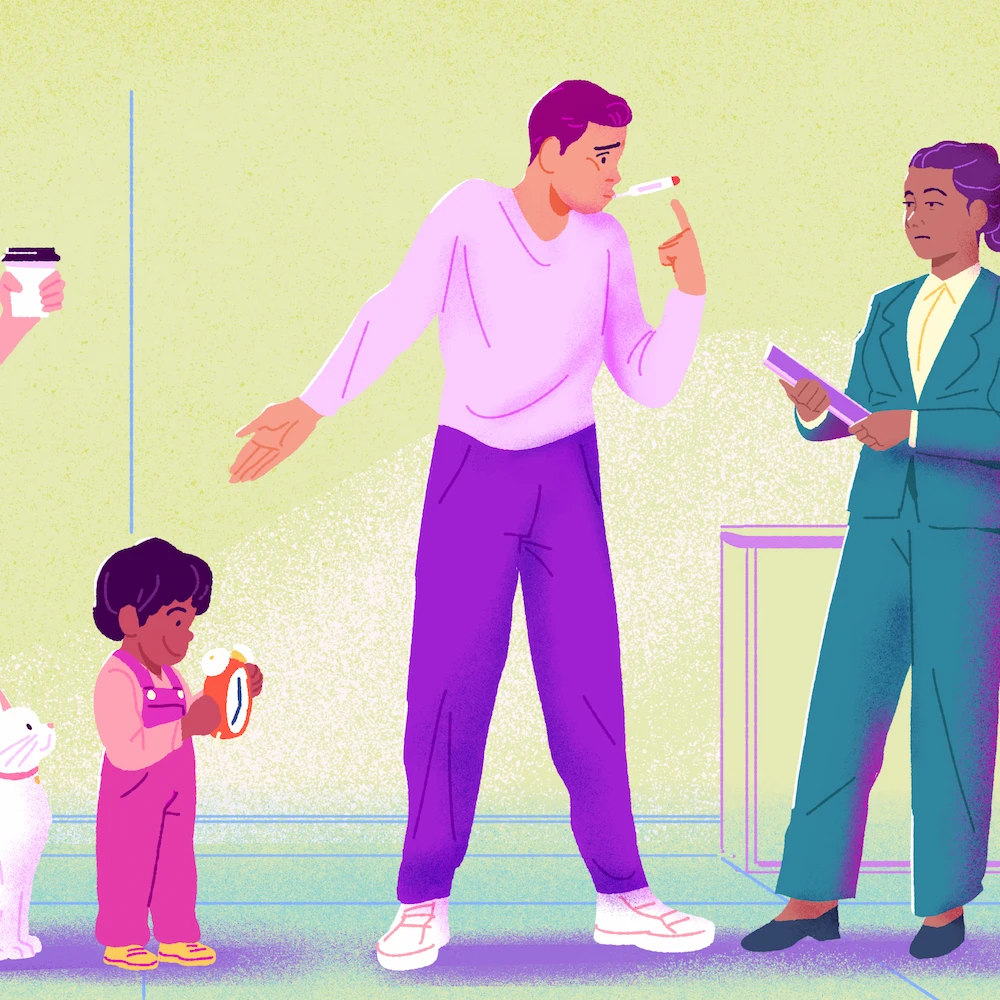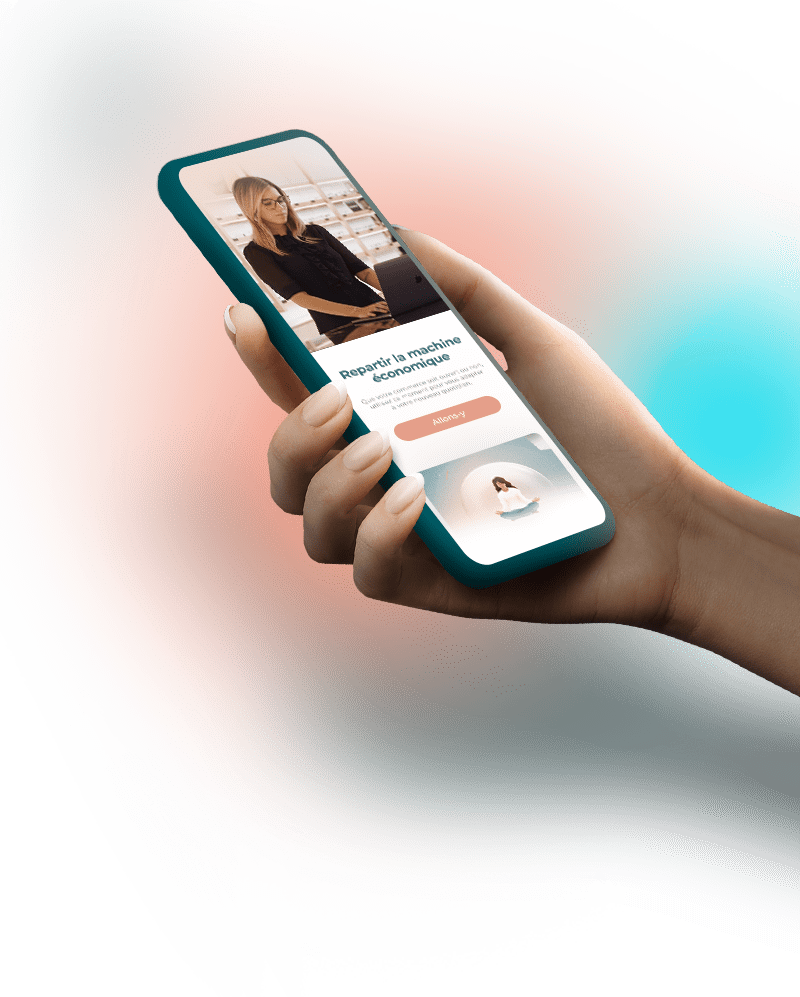How to Manage a Multigenerational Workplace: 6 Best Practices to Build a Collaborative Team
Key takeaways
- A multigenerational workplace brings together Baby Boomers, Gen X, Millennials, and Gen Z, each with unique strengths and challenges in communication, flexibility, and technology.
- By fostering clear communication, an inclusive culture, and flexible leadership, managers can turn generational differences into drivers of innovation and team performance.
- Intergenerational mentorship, including reverse mentoring, strengthens collaboration and helps bridge digital and cultural gaps across age groups.
- Personalized recognition programs and flexible scheduling boost employee engagement and retention across all generations.
- Modern tools like employee scheduling software help HR managers in Quebec and Canada simplify planning, improve communication, and create a more cohesive multigenerational workforce.
Many managers today have to deal with the challenges of a multigenerational workplace. To manage a team with staff from Baby Boomers to Gen Z, managers must successfully handle different skills, communication styles, and expectations.
This article offers practical strategies to unlock the full potential of your organization, making it a thriving multigenerational workplace. Happier staff make for satisfied and returning customers, and booming business.
What Is a Multigenerational Workplace?
A multigenerational workplace is an environment where people from different generations, such as Baby Boomers, Gen X, Millennials, and Gen Z, collaborate side by side. This mix of ages, experiences, and perspectives can enrich the workplace with unique strengths, while also presenting its own set of challenges.
What Generations Are Currently in the Workforce?
Five generations are currently working side by side, with very few of the youngest generation currently active:
- Baby Boomers: Born 1946–1964
- Generation X: Born 1965–1980
- Millennials (also called Gen Y): Born 1981–1996
- Generation Z: Born 1997–2012
- Generation Alpha: Born 2012-2024
This presents unique opportunities and challenges, as each generation brings different perspectives, skills, and expectations.
The Benefits of a Multigenerational Workplace
When organizations embrace generational differences, a multigenerational workplace can become a powerful asset. Especially in driving innovation and creativity. Why? Because combining varied experiences, knowledge, and perspectives creates a more dynamic environment where fresh ideas and problem-solving approaches can thrive.
Let’s take a closer look:
- Experienced generations, like the Baby Boomers and Gen X, bring extensive professional experience, valuable historical knowledge, and deep industry insights.
- Greener generations, like Millennials and Gen Z, offer digital fluency and ease with rapid technological change, helping businesses evolve in ways previous generations may not naturally approach.
This mix also encourages knowledge sharing. Experienced employees can mentor younger colleagues, while younger workers can support their senior peers in adapting to new technologies. The result is an environment where expertise and innovation fuel each other.
Finally, by fostering inclusivity and flexibility across all age groups and accommodating the diverse needs and preferences of each generation, organizations can strengthen engagement and boost employee retention.
Multigenerational Workplace Challenges
While a multigenerational workplace offers many benefits, it also presents unique challenges. Employees from different generations bring diverse values, work styles, and expectations that leaders must balance thoughtfully.
Communication
Communication differences are among the most common hurdles. Older generations often favor face-to-face conversations or phone calls, while younger employees are more comfortable with instant messaging and digital tools. Left unaddressed, these differences can cause misunderstandings. Leaders should adapt their communication methods to meet employees where they are, while ensuring clarity and inclusivity across all channels. Though it may feel like a balancing act at first, this effort pays off in stronger engagement and trust.
Flexibility
Work-life balance expectations also vary. Gen X and Millennials often seek flexibility such as remote work when possible, flexible schedules or adjustable work hours. Baby Boomers may prefer more structured routines with regular, recurring work schedules. Striking a balance means offering flexibility where possible without sacrificing team cohesion or productivity.
Technology
The pace of technological change adds another layer of complexity to a multigenerational workplace. Digital-native Millennials and Gen Z employees tend to adopt new tools quickly, whereas older generations may need more time and support. Providing proper training and encouragement ensures that all employees can confidently use the latest technologies without feeling left behind. And when you can, opt for the most user-friendly tools that will make change management less of a burden.
Professional Development
Generations also differ in their career expectations. Senior employees often value stability and steady growth, while younger colleagues may prioritize rapid advancement and meaningful work. Clear communication around career development opportunities and expectations can help bridge these differences and ensure everyone feels valued.
Intergenerational Tensions
Finally, intergenerational tensions can emerge from conflicting perceptions. Older workers may view younger ones as entitled, while younger employees may see their senior peers as resistant to change. To prevent these divides, leaders should foster a culture of respect and collaboration, promoting cross-generational mentorship and highlighting the strengths each group brings.
Ultimately, overcoming these challenges requires building an inclusive culture where every generation feels respected and supported. By encouraging open dialogue, promoting diversity and inclusion policies, and ensuring equal opportunities, organizations can transform generational differences into a source of strength rather than conflict.
Keep these challenges in mind, address them head on, and you’ll build a stronger, more cohesive workplace that contributes to your organization’s success.
Tips for Managing Different Generations of Workers
To be an effective leader in a multigenerational workplace, you need to understand generational differences, including strengths of each. The following tips, which focus on the 4 most active generations, can help you effectively address them.
Baby Boomers
Baby Booms are gradually retiring, but a significant portion still holds influential roles in leadership, management, or specialized positions, contributing vast experience.
They are known for their strong work ethic, loyalty, and sense of duty. They often value job stability and prefer structured work environments. Many have been in their roles for a long time and bring deep industry knowledge. However, they may be less comfortable with rapid technological changes.
Tips for Managing Baby Boomers
- Recognize their experience and provide opportunities for them to mentor younger employees.
- Encourage them to share their knowledge through workshops or training sessions.
- Offer flexible part-time work options to help with a smooth transition into retirement.
Generation X
Many Gen Xers are now in mid-level managerial roles, acting as a bridge between senior leadership and younger generations.
Gen Xers witnessed the transition from analog to digital, shaping them into independent, adaptable, and pragmatic professionals. Today, many are in mid- to late-career stages, with children who are teenagers or already out of the house. While some may still be balancing family responsibilities and even caring for aging parents, many are now increasingly focused on career stability and planning for retirement.
Tips for Managing Gen Xers
- Provide autonomy and opportunities for leadership roles.
- Recognize their achievements to keep them motivated.
- Offer flexible work hours options to support work-life balance.
Millennials
Millennials are currently the largest generation in the workplace and the most digitally connected. Now in their late 20s to early 40s, many are balancing growing careers with raising young families. They place a strong emphasis on flexibility, work-life balance, and purposeful work that aligns with their values. Collaboration and regular feedback are especially important to them, and they thrive in environments that foster inclusivity, innovation, and continuous growth.
Tips for Managing Millennials
- Offer regular feedback and opportunities for growth.
- Foster a collaborative, team-oriented work environment.
- Align their tasks with the organization’s mission to keep them engaged
Generation Z
Gen Zers are the first fully digital-native generation in the workplace. Many are already well established in entry- to mid-level roles, while the youngest are beginning their careers. They bring adaptability, an entrepreneurial mindset, and a strong sense of social responsibility. Tech-savvy and highly comfortable with rapid change, Gen Z values diversity, inclusion, sustainability, and social impact. They also tend to seek meaningful work, expect quick career progression, and are drawn to employers who reflect their values.
Tips for Managing Gen Zers
- Provide clear career paths and opportunities for quick advancement.
- Create a tech-forward workplace with modern digital tools and platforms.
- Promote a diverse and inclusive work culture to align with their values.
Want to dive deeper? Read our complete article on how to better manage Gen Z.
6 Strategies to Make your Organization a Successful Multigenerational Workplace
How do you incorporate all these generation-specific tips into a cohesive, manageable approach so that your workplace encourages respectful and productive collaboration? Start with these six strategies.
1. Adapt Communication to Your Team
One of the best ways to keep a multigenerational team running smoothly is through clear, open communication. In a retail store or a pharmacy, that might look different depending on the person: Baby Boomers may prefer detailed instructions during team meetings or written notes, while younger employees might lean toward quick text messages, group chats, or updates in a scheduling app.
💬 The trick is to use a mix of methods so everyone stays in the loop. When employees feel their communication style is respected, teamwork feels more natural, no matter the age mix on the floor.
Bridging Generational Gaps in Communication
At a busy fast food restaurant, Maria, a Gen X manager, likes to share updates in pre-shift meetings and on break room notes. Jordan, a Millennial server, prefers getting the info and making schedule requests through his phone. Miscommunication followed.
The owner stepped in. Together, they set a clear system: while menu updates are discussed during pre-shift huddles, they are also shared through their workforce management app. And so are shift swaps and last-minute changes.
Less confusion, smoother shifts, improved teamwork.
2. Leverage the Strengths of Each Generation
Each generation brings its own strengths to the table. Baby Boomers offer invaluable experience, Gen Xers bring practicality and tech-savviness, Millennials contribute creativity and collaboration, and Gen Z injects fresh ideas and digital expertise.
🤝 Foster cross-generational collaboration so that each generation can learn from one another and contribute their unique perspectives.
3. Create a Flexible and Inclusive Environment
The importance of flexibility in managing a multigenerational team cannot be overstated. While older generations may prefer a more structured work environment, younger generations may seek flexibility in terms of hours, shifts and positions.
🛝 Offer flexible working arrangements, such as flextime, to meet the needs of all employees while enhancing productivity and job satisfaction.
4. Encourage Cross-Generational Mentorship and Collaboration
Mentorship programs that span generations can be incredibly effective in breaking down generational barriers. Pair younger employees with more experienced mentors to facilitate knowledge transfer. Also, use the reverse mentoring model to help older employees stay current with new technologies and trends.
🌟 These programs can foster mutual respect and create a culture of collaboration.
5. Tailor Your Recognition and Reward Systems
Different generations are motivated by different types of recognition and rewards. For Baby Boomers, recognition for long-term service might be particularly meaningful, while Millennials and Gen Z may appreciate public acknowledgment of their achievements and opportunities for growth.
💖 Tailor reward systems to meet the preferences of different generations to increase motivation and employee satisfaction.
6. Adapt Your Leadership Style to Generational Needs
Adjust your leadership style to meet the varying expectations and preferences of each generation. Baby Boomers often prefer a more traditional, hierarchical structure, while Millennials and Gen Z may thrive in a more collaborative, participatory environment.
🫶 Being adaptable and mindful of these differences will allow you to create a work environment that’s productive and satisfying for employees of all generations.
Adaptability, Patience, and Clear Communication: Your Allies in Shaping a Multigenerational Workplace
At its core, successfully managing a multigenerational workplace is less about catering to generational differences and more about recognizing and maximizing the unique strengths, skills, and perspectives of each individual. Avoid the trap of stereotypes and instead build a culture of open communication and mutual respect. Ask for regular feedback to ensure your leadership approach remains effective and inclusive.
At the end of the day, it’s all about creating an environment where every employee feels valued and empowered to contribute their best work, regardless of the generation they belong to. Lead with intention, and you’ll build a dynamic, collaborative team that thrives on diversity and innovation. You’ve got this!
What is a multigenerational workplace?
A multigenerational workplace is an environment where employees from different generations including the Baby Boomers, Gen X, Millennials, and Gen Z work together. Each group brings unique values, skills, and perspectives that can enrich collaboration but may also create challenges.
What are the benefits of having multiple generations at work?
Benefits include:
- Broader perspectives and fresh ideas
- Knowledge sharing between experienced and younger employees
- Stronger adaptability to change and technology
- Increased inclusivity and collaboration across age groups
What challenges can arise in a multigenerational workplace?
Common challenges include differences in communication styles, varying expectations around work-life balance, adapting to new technology at different paces, and potential tension around career goals or values. Without good management, these differences can lead to misunderstandings or conflict.
How can managers support a multigenerational team?
Managers can:
- Adapt communication styles to meet everyone’s needs
- Promote mentorship and cross-generational learning
- Offer flexibility in scheduling and work arrangements
- Provide training so all employees can keep up with new tools
- Create an inclusive culture that values all perspectives
How does communication differ across generations?
Older generations often prefer face-to-face meetings, phone calls, or detailed messages. Younger employees may prefer text messages, apps, or quick digital updates. A blended approach helps ensure all team members stay informed and feel respected. If you’re using an employee management app, having one central communication tool is the best way to go.
How do workplace expectations vary by generation?
- Baby Boomers: value stability, loyalty, and structured work.
- Gen X: independent, adaptable, often balancing career with family or aging parents.
- Millennials: value flexibility, purpose, and work-life balance.
- Gen Z: digital natives seeking rapid growth, inclusivity, and social impact.
How does a multigenerational workplace impact employee retention?
When employees of all generations feel valued and supported, they are more likely to stay with the organization. Offering flexibility, inclusivity, and clear growth opportunities helps reduce turnover across all age groups.


